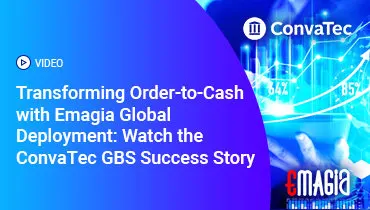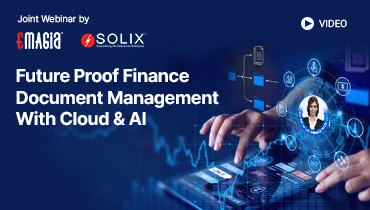In today’s digital economy, businesses process thousands of invoices every year — each packed with crucial data necessary for accounting, auditing, compliance, and cash flow management. However, the traditional approach to handling these invoices is riddled with manual labor, human errors, and inefficient workflows. That’s where data extraction for invoices becomes a game-changer.
This blog explores everything you need to know about automating invoice data capture — from basic definitions to advanced AI solutions and how innovative platforms like Emagia are revolutionizing the process.
What is Data Extraction for Invoices?
Data extraction for invoices refers to the process of identifying and retrieving key information from an invoice — such as invoice numbers, due dates, vendor names, tax details, and total amounts — and converting it into a digital format that can be processed by financial systems.
This process is essential for businesses seeking to move away from manual entry and toward a more automated and accurate way of managing their accounts payable processes.
Why Invoice Data Extraction Matters
Handling invoice data the old-fashioned way comes with a set of serious drawbacks:
- Time-consuming manual entry
- High risk of human error
- Delayed approvals and payments
- Difficulty in tracking and auditing
- Lack of visibility and control
Automating invoice data extraction solves these problems and more. By streamlining how invoice data is collected, processed, and stored, companies save time, improve accuracy, and ensure compliance.
Core Methods of Data Extraction for Invoices
There are multiple techniques businesses use to extract data from invoices. Each method offers different benefits based on scale, budget, and complexity.
1. Manual Data Entry
Still used in smaller businesses or legacy systems, this method involves human operators reading and entering invoice data manually into a system.
- Pros: Low setup cost
- Cons: Slow, error-prone, and not scalable
2. OCR (Optical Character Recognition)
OCR converts scanned images or PDFs into machine-readable text. It works well with typed invoices and consistent formatting.
- Pros: Removes the need for manual typing
- Cons: Struggles with poor-quality scans, handwritten content, or inconsistent layouts
3. Template-Based Extraction
Templates define where specific fields (like invoice numbers or amounts) are located on a document.
- Pros: Good for repetitive formats
- Cons: Requires frequent template updates, not flexible
4. AI and Machine Learning
Artificial Intelligence uses algorithms to detect data fields without relying on a fixed template. Over time, the system learns and becomes smarter.
- Pros: Highly adaptable to different invoice formats
- Cons: Requires training data and more setup
5. Robotic Process Automation (RPA)
RPA bots simulate human behavior to extract data and transfer it into ERPs or accounting systems.
- Pros: Great for automating repetitive tasks
- Cons: May struggle with unstructured documents
6. Hybrid Approach
Combining OCR, AI, and RPA into a unified system is now the most effective method, providing accuracy and adaptability.
Step-by-Step Process of Invoice Data Extraction
Here’s how a modern data extraction system works in most enterprises:
- Document Capture: Invoices are received via email, scan, or upload.
- Preprocessing: The system improves image quality for better OCR performance.
- Data Extraction: Fields such as invoice date, vendor name, line items, and tax details are extracted.
- Validation: Rules or human review ensure that extracted data is correct.
- Integration: The clean data is pushed into ERP/accounting software.
- Audit Trail Creation: Logs and timestamps are created for compliance.
Benefits of Automating Data Extraction for Invoices
Automation delivers both tactical and strategic value. Here’s what you gain:
- Faster Processing Times
- Reduced Manual Errors
- Lower Operational Costs
- Improved Vendor Relationships
- Real-Time Reporting & Visibility
- Stronger Compliance and Audit Readiness
Challenges in Invoice Data Extraction
While the benefits are clear, challenges still exist:
- Inconsistent invoice formats from multiple vendors
- Handwritten or poorly scanned documents
- Foreign languages and currencies
- Integration with legacy systems
- Regulatory compliance issues
Overcoming these hurdles requires intelligent technology solutions and thoughtful implementation.
Industries That Benefit the Most
Invoice data extraction is especially beneficial for industries like:
- Retail and E-commerce
- Manufacturing
- Logistics and Transportation
- Healthcare
- Government and Public Sector
- Financial Services
Any business handling large volumes of invoices will see ROI from automating this function.
Trends Shaping the Future of Invoice Data Extraction
- AI-Powered Smart Extraction
- No-Code/Low-Code Integration Platforms
- Blockchain for Document Authentication
- Real-Time Processing with Cloud Platforms
- Predictive Analytics from Invoice Data
The field is evolving rapidly, and staying ahead of these trends helps businesses gain a competitive edge.
How Emagia Is Redefining Invoice Data Extraction
Smarter, Faster, and More Intelligent Invoice Processing
Emagia’s AI-powered platform is built to automate complex finance operations, including data extraction for invoices.
Here’s how Emagia delivers unmatched value:
- AI + OCR + RPA: Combines multiple technologies for superior accuracy
- Template-Free: Adapts to any invoice layout
- Touchless Processing: Enables true end-to-end automation
- ERP Integration: Seamlessly connects with SAP, Oracle, Netsuite, and others
- Intelligent Workflows: Handles exceptions, validations, and approvals automatically
- Global Compliance: Supports multi-language, multi-currency processing
- Actionable Insights: Turns extracted data into dashboards and analytics
With Emagia, businesses can transform their accounts payable departments from cost centers into strategic value drivers.
Frequently Asked Questions About Invoice Data Extraction
What is data extraction for invoices?
It’s the process of capturing specific data from invoices and converting it into a structured, digital format for automated processing.
How does invoice data extraction work?
Invoices are scanned or uploaded, and tools like OCR, AI, and RPA extract data fields which are then validated and integrated into accounting systems.
Can AI extract invoice data?
Yes, AI can intelligently identify and extract invoice data from different formats without relying on rigid templates.
What types of data are typically extracted from invoices?
Common fields include invoice number, date, vendor name, line items, subtotal, tax, and total amount.
Is invoice data extraction secure?
Modern solutions like Emagia use encrypted channels, role-based access, and audit logs to ensure data privacy and compliance.
Can I use invoice data extraction with my ERP system?
Yes. Tools like Emagia integrate with major ERP systems, including SAP, Oracle, QuickBooks, and Microsoft Dynamics.
What if my vendors use different invoice templates?
AI-based extraction tools can learn and adapt to various invoice formats, making template diversity manageable.
How long does it take to implement an automated solution?
Depending on the complexity, implementation can range from a few days to several weeks, especially if integrating with large ERPs.
Will I still need human oversight?
While automation reduces the need for human input, oversight is often required for exception handling and compliance.
Conclusion: The Future Is Automated
Data extraction for invoices is no longer a luxury — it’s a necessity for modern business operations. Automation doesn’t just make invoice processing faster; it makes your entire finance function more intelligent, agile, and compliant.
Platforms like Emagia are leading this transformation by offering smart, scalable, and secure solutions tailored to the needs of global enterprises.
Now is the time to stop drowning in paperwork and start driving your business forward with intelligent invoice data extraction.



